
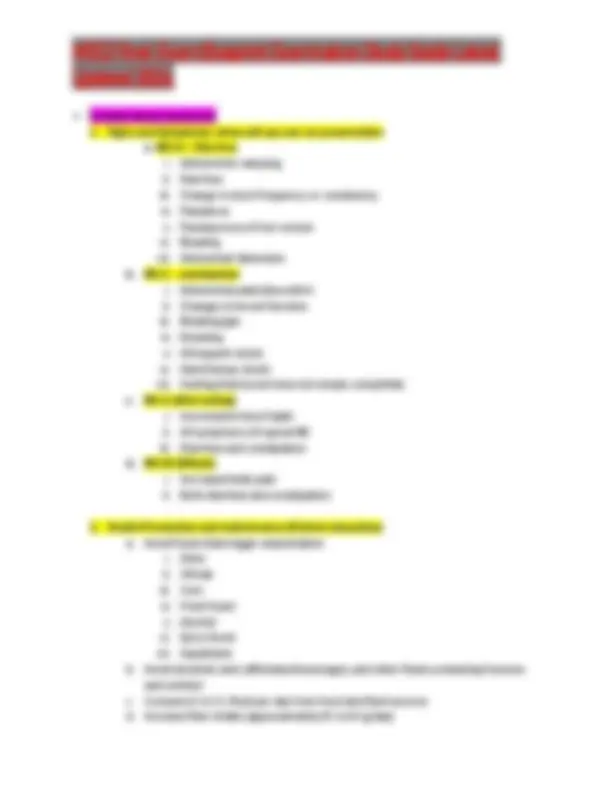
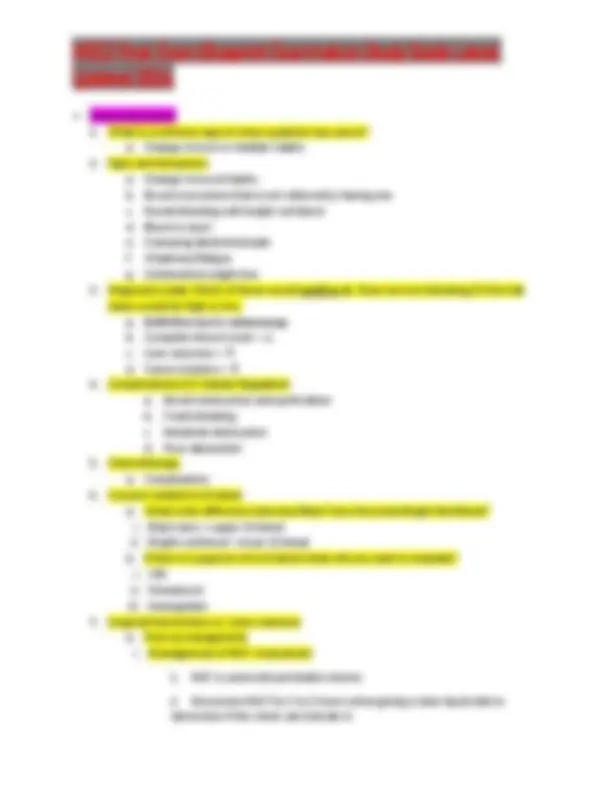
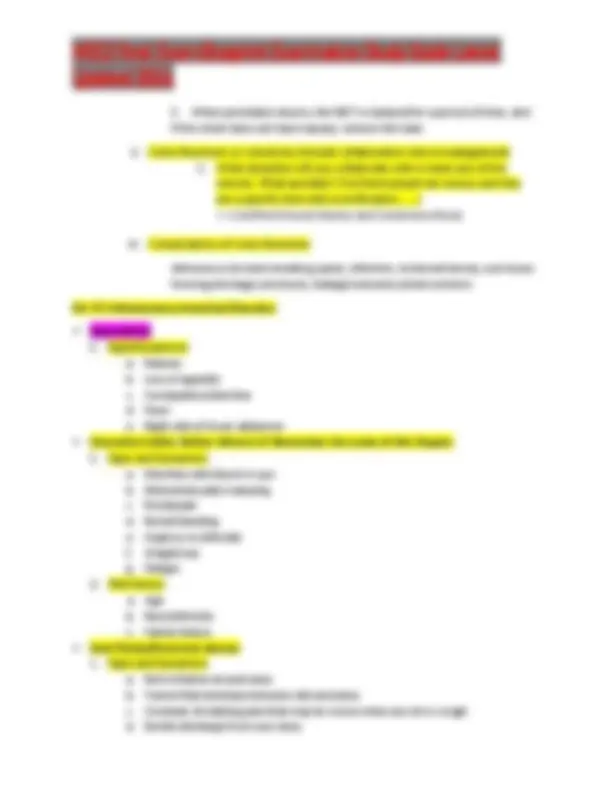

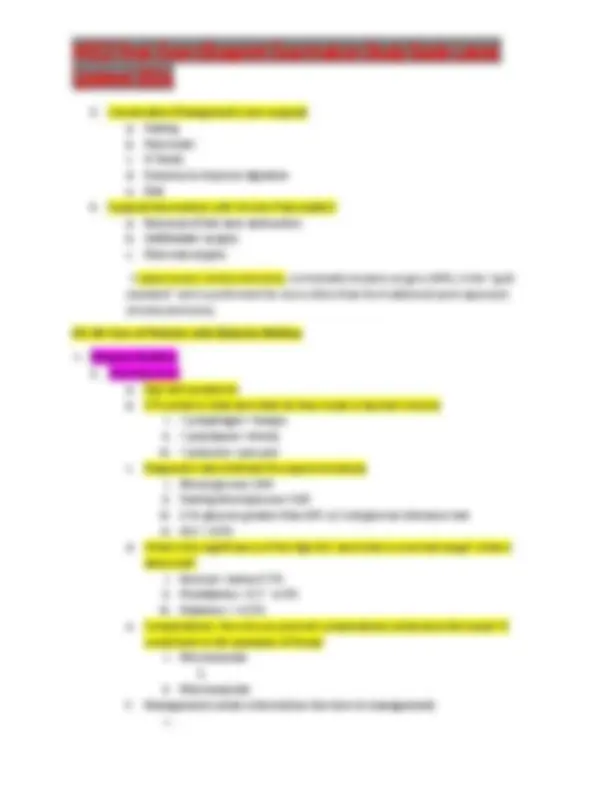

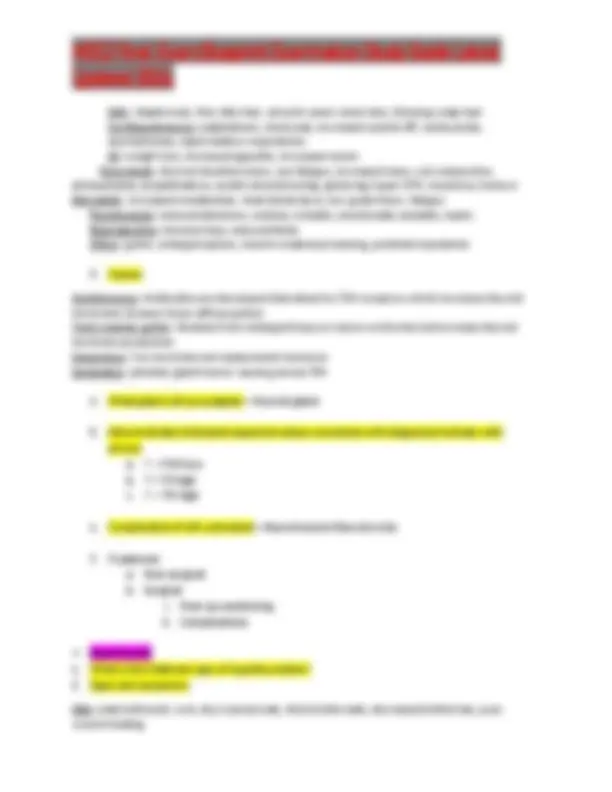

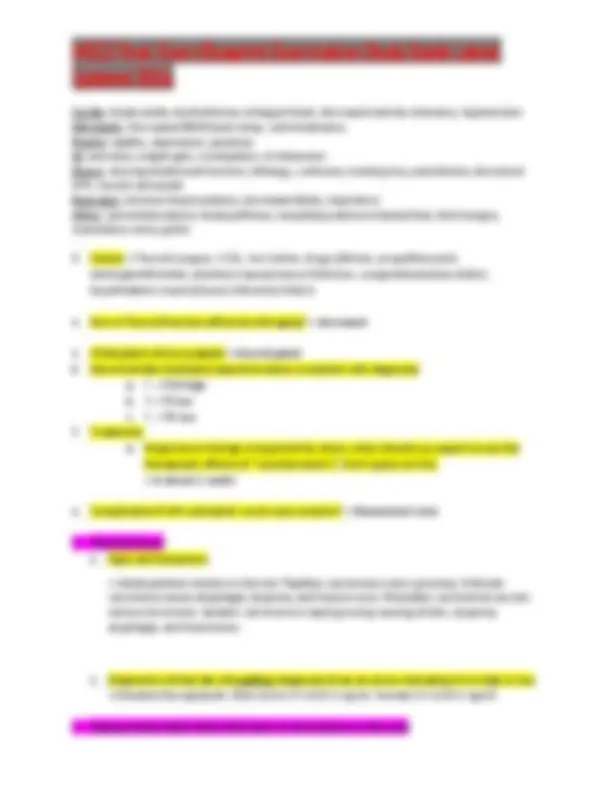

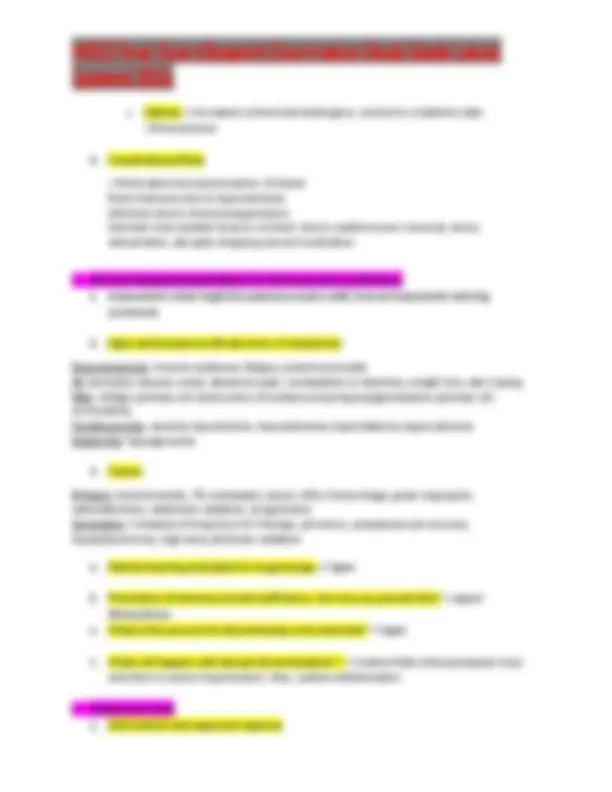
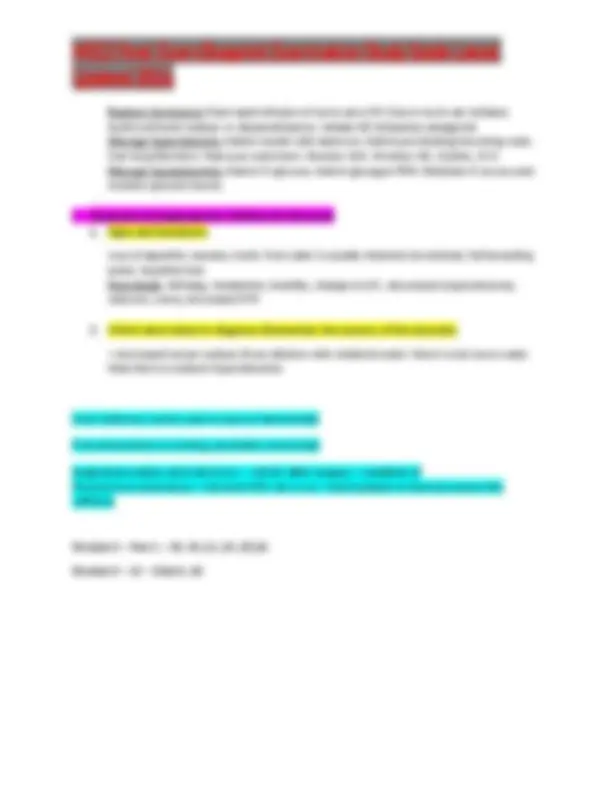


Study with the several resources on Docsity

Earn points by helping other students or get them with a premium plan


Prepare for your exams
Study with the several resources on Docsity

Earn points to download
Earn points by helping other students or get them with a premium plan
Community
Ask the community for help and clear up your study doubts
Discover the best universities in your country according to Docsity users
Free resources
Download our free guides on studying techniques, anxiety management strategies, and thesis advice from Docsity tutors
This comprehensive study guide provides detailed information on various colorectal and biliary system disorders, including their signs and symptoms, risk factors, complications, and treatment options. It covers topics such as appendicitis, anal fistula, cholecystitis, pancreatitis, diabetes mellitus, hyperthyroidism, and adrenal disorders. The guide also includes practical advice on patient education, foot care, and multidimensional care.
Typology: Exams
1 / 20

This page cannot be seen from the preview
Don't miss anything!













MDC2 Final Exam Blueprint
WHAT IS THE MASTER GLAND = pituitary gland
CH: 56: Noninflammatory Intestinal Disorders
Diagnostics for
- Fecal occult blood test - Stool culture - Barium - Colorectal study - CT - Colonoscopy - Endoscopic retrograde cholangiopancreatography (ERCP)
➢ Mechanical Intestinal Obstruction vs. a Non-Mechanical Intestinal Obstruction- there is a link and video on this in the course materials if you are still unsure of the difference.
1. Mechanical ▪ Adhesions ▪ Tumors ▪ Fibrosis ▪ Strictures ▪ Diverticulitis ▪ Fecal impaction ▪ Hernia ▪ Volvulus 2. Nonmechanical ▪ Paralytic ileus ▪ Neurogenic disorder ▪ Vascular disorder ▪ Electrolyte imbalance ▪ Inflammatory response ➢ What is…
lower GI include?
f. Fever
➢ Colorectal Cancer
iii. Complications of Colon Resection dehiscence (incision breaking open), infection, incisional hernia, scar tissue forming blockage (stricture), leakage between joined sections
CH: 57: Inflammatory Intestinal Disorders
➢ Appendicitis
f. Swelling and redness around your anus g. Fever
CH: 59: Care of Patients with Problems of the Biliary System and Pancreas
➢ Cholecystitis (Consider the 4 Fs)
**1. Forty or over
➢ Pancreatitis
k. Pancreatic cancer
ii..
iii..
Not responsive patient/NPO: Admin glucose IM or subcut and repeat in 10 minutes if still unconscious. Place in lateral position to reduce aspiration and notify provider
CH: 63: Care of Patients with Problems of the Thyroid and Parathyroid Glands
➢ Hyperthyroidism
Skin : diaphoresis, fine silky hair, smooth warm moist skin, thinning scalp hair Cardiopulmonary : palpitations, chest pain, increased systolic BP, tachycardia, dysrhythmias, rapid shallow respirations GI : weight loss, increased appetite, increased stools Neurologic : blurred doubled vision, eye fatigue, increased tears, red conjunctive, photophobia, exophthalmos, eyelid retractions/lag, globe lag, hyper DTR, insomnia, tremors Metabolic : increased metabolism, heat intolerance, low grade fever, fatigue Psychosocial : reduced attention, restless, irritable, emotionally unstable, manic Reproductive : Amenorrhea, reduced libido Other : goiter, enlarged spleen, muscle weakness/wasting, pretibial myxedema
Autoimmune : Antibodies are developed that attach to TSH receptors which increases thyroid hormones (Graves’/toxic diffuse goiter) Toxic nodular goiter : Nodules from enlarged tissue or tumor on the thyroid increase thyroid hormone production Exogenous : Too much thyroid replacement hormone Secondary : pituitary gland tumor causing excess TSH
➢ Hypothyroid
Skin : pale/yellowish, cool, dry/coarse/scaly, thick brittle nails, decreased brittle hair, poor wound healing
Pulmonary : hypoventilation, pleural effusion, dyspnea
= Iatrogenic (surgery), radiation, idiopathic/autoimmune, congenital, hypomagnesaemia
= correct vit D, calcium, and mag deficit, Avoid foods high in phosphorus such as milk, yogurt, and processed cheese. Use supplements (lifelong). Wear a medical alert badge
CH: 62: Care of Patients with Pituitary and Adrenal Gland Problems
➢ Adrenal Hyperfunction/Excess/ Chronic hypercortisolism (Cushing’s): Define
Appearance : moon face, buffalo hump, truncal obesity, weight gain Cardio : Hypertension, dependent edema, bruising, petechiae Musculoskeletal : muscle atrophy, osteoporosis/fractures, decreased height, aseptic necrosis of femur head, slow or poor wound healing of fractures Skin : thin, striae, increased pigmentation, increased r/o pressure ulcers Immune : risk of infection, decreased inflammatory response, and decreased signs of infection
Endogenous : bilateral adrenal hyperplasia, pituitary adenoma, malignancies (lung, GI tract, pancreas), adrenal adenoma/carcinoma Exogenous : Use of glucocorticoids (for asthma, autoimmunity, organ transplant, cancer chemo, allergic response, chronic fibrosis).
c. Salivary = increased cortisol and androgens, cortisol to creatinine ratio
25nmol/nmol
➢ Adrenal Hypoperfusion/Addison’s/ Adrenocortical insufficiency
Neuromuscular : muscle weakness, fatigue, joint/muscle pain GI : anorexia, nausea, vomit, abdomen pain, constipation or diarrhea, weight loss, salt craving Skin : vitiligo (primary d/t destruction of melanocytes)/hyperpigmentation (primary d/t ACTH=MSH) Cardiovascular : anemia, hypotension, hyponatremia, hyperkalemia, hypercalcemia Endocrine : hypoglycemia
Primary : Autoimmunity, TB, metastatic cancer, AIDs, hemorrhage, gram-neg sepsis, adrenalectomy, abdomen radiation, drugs/toxins Secondary : Cessation of long-term GC therapy, pit tumor, postpartum pit necrosis, hypophysectomy, high dose pit/brain radiation
➢ Addisonian Crisis
Replace hormones: Start rapid infusion of norm sal or 5% Dex in norm sal. Initiates hydrocortisone sodium or dexamethasone. Initiate H2 histamine antagonist Manage hyperkalemia: Admin insulin with dextrose. Admin pot binding/excreting resin. Use loop/diuretics. Have pot restriction. Monitor I&O. Monitor HR, rhythm, ECG Manage hypoglycemia: Admin IV glucose. Admin glucagon PRN. Maintain IV access and monitor glucose hourly.
➢ Syndrome of Inappropriate Antidiuretic Hormone
Stool softeners can be used in cases of diverticulitis
If an intervention is working, peristalsis comes back
Surgical procedure adrenalectomy – risk for after surgery = condition of Pheochromocytomatous = rebound HTN can occur = teach patient on blood pressure (No caffeine)
Module 8 – Part 1 – 39, 44, 61, 64 ,65,
Module 9 – 10 – Slide 5, 66